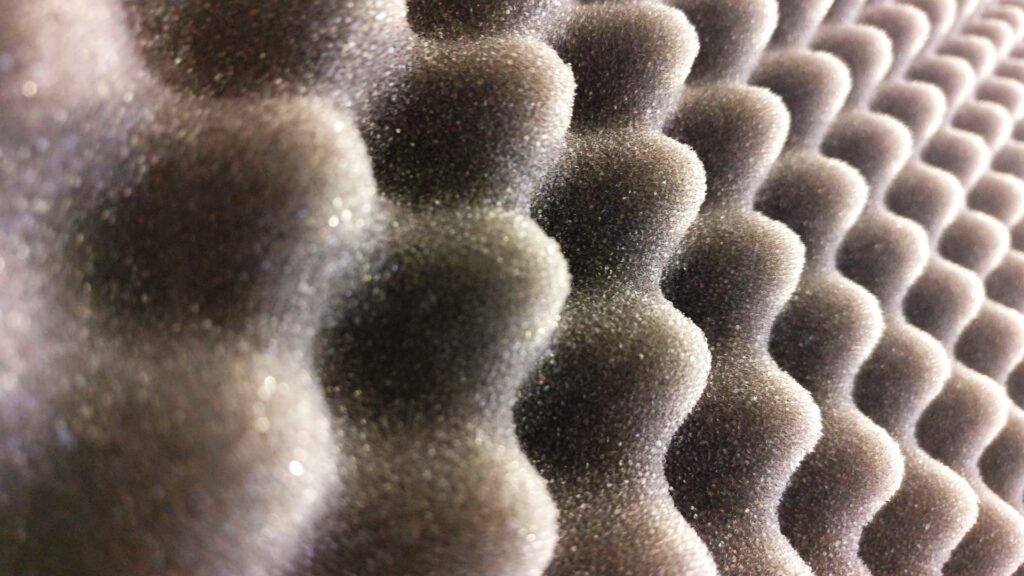
Acoustic foam has long been used in both marine and industrial applications to help decrease noise, reduce vibrations and protect workers. Sound abatement foam has been used by boat manufacturers to not only isolate but also attenuate sound and vibrations from marine engines while other sound deadening foams have been used in a variety of industrial environments to reduce noise pollution and also create a safer environment for workers.
The science of how sound reduction foam works is outlined below.
Do you want sound absorbing or sound blocking?
The difference between sound absorbing and sound blocking is most easily depicted in how a recording studio’s foam lined walls work. You might think that that foam is absorbing the sound but that is not the case. The open cell foam that is being used on these walls allows sound waves to pass right through them. In order to block the sound the foam would need to be heavy and dense to stop the sound waves from passing through. Acoustic foam is used to reduce the echo and reverberations that would otherwise cause problems with the recording. It does not block the sound from escaping the room.
Foam plays a large role in reducing noise and vibrations in many settings, and both open and closed cell foams can be used to control the acoustics of a room.
Sound Control Foams
Foam that have the ability to absorb sound are excellent for marine applications where a loud, vibrating motor would make the experience uncomfortable. Without marine foam the engine would ruin the boating experience.
Closed-cell cross linked polyethylene foam is the ideal solution for these types of applications because this dense foam absorbs and blocks sound, creating a better experience for boat passengers.
In industrial environments, both closed-cell sound deadening foam and open-cell foams are used to create a safer environment for workers. Closed cell foam products are used to block sounds and reduce the sounds in an environment, while open cell foams are used to prevent sounds from reverberating across a room. Both can be helpful in controlling and reducing the noise in a given area, which can help meet OSHA regulations on noise control.
Noise requirements from OSHA
It is important to be aware of the OSHA requirements for employers. OSHA requires a hearing conservation program when noise exposure is at or above 85 decibels averaged over 8 working hours, or an 8-hour time-weighted average (TWA). Under OSHA’s Noise Standard, the employer must reduce noise exposure through engineering controls, administrative controls, or Hearing Protection Devices (HPDs) to attenuate the occupational noise received by the employee’s ears. A combined open cell and closed cell foam application is a good start towards meeting those requirements.
